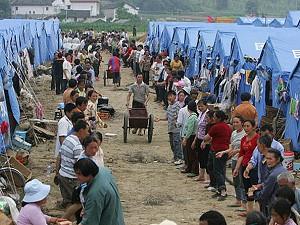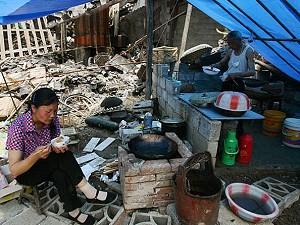MIANZHU, China—New aftershocks toppled 420,000 houses and injured dozens in southwest China on Tuesday, heaping destruction and fear on a region struggling to recover from the country’s worst earthquake in decades.
The houses collapsed when a 5.4 magnitude aftershock rocked Sichuan province’s Qingchuan county on Tuesday afternoon, injuring 63 people, six critically, Xinhua news agency said.
Another tremor, of 5.7 magnitude, hit neighbouring Ningqiang county in Shaanxi province, the agency said, citing the China National Seismological Network. No deaths had been reported.
The aftershocks struck the mountainous region as soldiers worked non-stop to dig a giant sluice to ease pressure on a swelling “quake lake”, and the planned evacuation of hundreds of thousands of people to avert a new disaster continued, state media said.
The official death toll from the 7.9 magnitude quake that struck Sichuan province on May 12 was raised on Tuesday to 67,183, but it was certain to rise as 20,790 were listed as missing. The quake injured nearly 362,000 people.
Soldiers and police trekked to the Tangjiashan lake carrying dynamite to blast mud and rubble that has blocked a river and created the largest of 35 quake lakes formed when landslides triggered by the massive tremor blocked streams and rivers.






